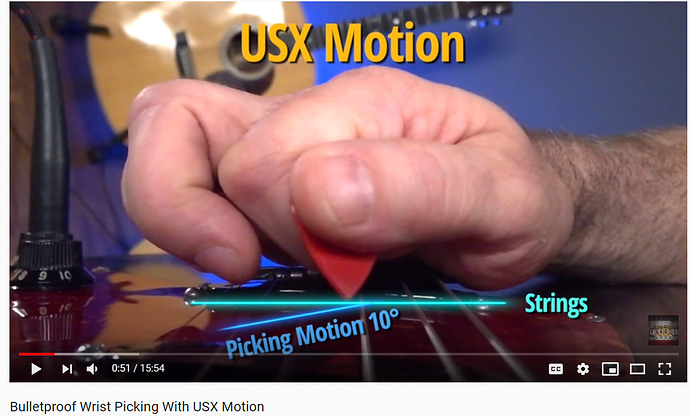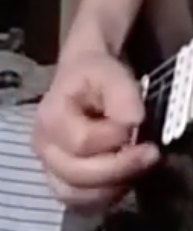Cool riff!
I can totally relate. I have always been a metal player but because i spent most of my time practicing a (messed up) lead-playing technique, i developed a lot of weird rythm playing habits.
+1. Do this to unleash the full unholy analysis potential of the forum’s sages.
However, as someone who has done a lot of cramped up metal-rythm guitar, i can at least say the following:
As you mentioned, the most common setup for the average metal-rythms (downstrokes, gallops, singlenoteriffs) is anything which allows you to do upward-escape motions
However, i think you are not really doing that. If i am not mistaken, the video shows your hand traveling in a slight halfcircle after each downstroke. If the escape motion is correct, the hand movement of most players looks more like a knocking movement. That your hand has to travel away from the strings a bit might indicate that your Pickslant tends more towards UPS than fits your approach. ( i am not too confident with my critique here, though. Its not visible beyond a doubt with slowed-down-YT, it is just the pitfall that i struggle with whenever i dont pay attention to my setup).
(Edit: This is weird but did we already have a discussion about how escape motions are relevant to bring the pick back above a string or am i just assuming this?)
I had some success with imagining that my picking position is a more extreme DPS than it actually has and creating the mental image that i primarily hit the front and bottom of the string instead of its top. That somehow helped me to not bring the pick too far behind the e-string (or dropped A-string if you are a grownup, like me).
That sounds similar to what i experience when my movements “get in the way of each other”. When playing the guitar the individual movements we do arent that complicated but you need to make lots of them in quick successions. If one movement isnt complete when you have to start the next one (or was completed in a flawed way) then we often compensate for that by applying additional force/tension, which tends to mess up the next move resulting in a vicious circle of increasing tension. I think once you found the right picking motion and internalised a good form, these issues will stop.
When i adopted a new picking position after i found CtC, i switched from an open hand (like yours) to a closed one with curled fingers. I am not saying one is better than the other, but i think this has helped me to change my position. You dont feel as tempted to cling to the disfunctional stuff you want to leave behind when you are not just trying to play different in the old setup.
I kind of want to write a lot more, especially concerning the gallops, but at this point i am unsure if i am not projecting some of the problems i used to have (or still have) with my own rythm playing onto your example because the whole thing sounds so familiar. I’d prefer to read what others have to say first and study a bit for now, looking forward to the results of this discussion here 




